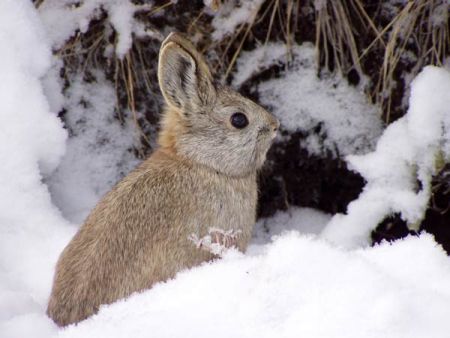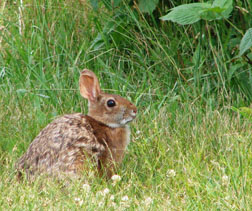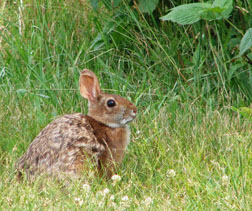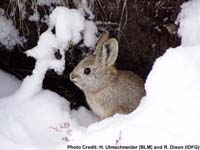 |
| Photo: US Fish & Wildlife |
Genetic analysis of the remaining New England cottontail populations show that five population clusters of rabbits are not mingling, which makes the survival of some of the populations even less likely than was already thought.
The University of New Hampshire based team of researchers found that New England cottontail rabbits in southern Maine, and central and southeastern New Hampshire formed one population cluster; Cape Cod, Massachusetts was home to another cluster; parts of eastern Connecticut and Rhode Island were home to a third cluster; and western Connecticut, southeastern New York and southwestern Massachusetts had a fourth cluster. One isolated population in eastern Connecticut was home to the fifth cluster, which was genetically isolated, even from the two other population clusters nearby.
The researchers say that immediate conservation efforts should focus on shoring up New England cottontail populations in Maine, New Hampshire, and on Cape Cod. Eventually, they say, the connectivity between the populations needs to be restored.
The New England cottontail is not a federally endangered species. It was found “warranted by precluded,” by the US Fish and Wildlife Service. Translated into English, that means they found that it probably deserves protection, but they just don’t have the resources to do it.
Read the article in the journal Conservation Genetics, here.
For more on the New England cottontail, and why it looks just like an eastern cottontail, but isn’t one, read more in the Outside Story nature column.
 Penny Becker, a research scientist overseeing the Columbia Basin pygmy rabbit recovery effort for the Washington State Department of Fish and Wildlife is pleased with the 40 percent survival rate of the rabbits released through a breeding program that brought in rabbits from surrounding states, according to an article in the Seattle Times.
Penny Becker, a research scientist overseeing the Columbia Basin pygmy rabbit recovery effort for the Washington State Department of Fish and Wildlife is pleased with the 40 percent survival rate of the rabbits released through a breeding program that brought in rabbits from surrounding states, according to an article in the Seattle Times.

 Last autumn, nine New England cottontails bred in captivity at the Roger Williams Park Zoo in Rhode Island were released inside a predator-proof fence enclosing one acre of the Ninigret National Wildlife Refuge, also in Rhode Island.
Last autumn, nine New England cottontails bred in captivity at the Roger Williams Park Zoo in Rhode Island were released inside a predator-proof fence enclosing one acre of the Ninigret National Wildlife Refuge, also in Rhode Island.
